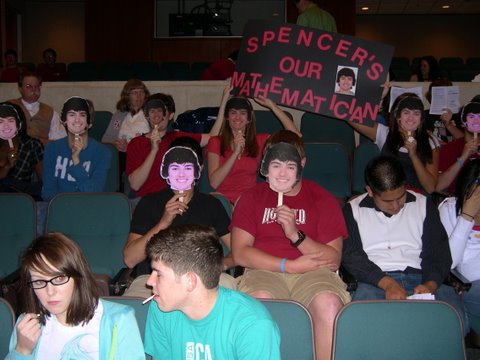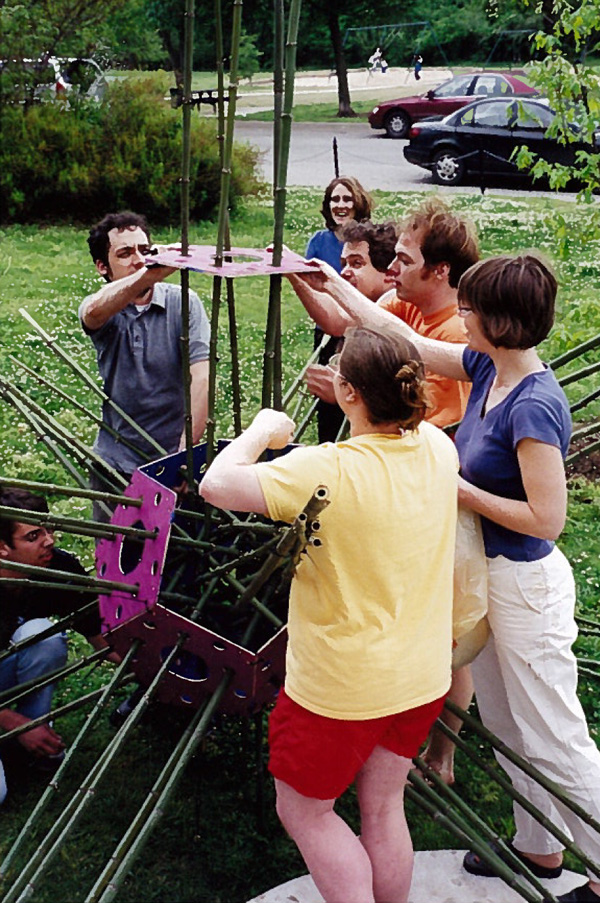This is a followup to my earlier post, A Rather Odd Car Trip. It provides a solution so if you haven’t read that yet, you should do so first as this won’t make much sense without it.
[spoiler]
Though czarrandy and others provided the distance between the cities, I’d like to show a way that you can work the problem.
We want to work out an equation that explains the amount of time traveled each downhill, level and uphill in terms of the distances involved.
How long does it take to travel a particular distance at a particular rate? Take the uphill portion as an example. At 56 mph, you travel 1 hour / 56 miles or n hours / x miles for any given distance x. So:
1/56 = n / x
Solve for n (hours) and you get:
x/56 hours traveled for distance x.
Do something similar for the level distance (call that y) and the downhill distance (call that z) and you get this equation for the time traveled in terms of the three distances traveling from A to B in 4 hours:
x/56 + y/63 + z/72 = 4
For the trip back, where uphill becomes downhill and vice versa, we get:
z/56 + y/63 + x/72 = 4 2/3 or 14/3
If we could solve for x, y and z, we would get our answer, but generally there will not be a unique solution for two equations with three unknowns. But in this case, what we need is the value of x+y+z , which we can attempt to extract that from the equations.
First, add the two equations together and get:
x/56 + x/72 + y/63 + y/63 + z/56 + z/72 = 26/3
To collect the terms, multiply both sides by the least common multiple of the denominators, which is 504, and we get:
9x + 7x + 8y + 8y + 9z + 7z = 4368
16x + 16y + 16z = 4368
16(x+y+z) = 4368
x+y+z = 273
for 273 miles each way. Notice that what we did was to add the equations up to get a value for the round trip, which might have been a first intuitive step if you happened to think of it.
Now… it was very lucky that we were able to nicely factor out that 16 in order to solve for x+y+z. This won’t always be the case! The three speeds were chosen carefully so that this would work out. Consider if we used some other randomly chosen values:
Uphill: 50 mph
Level: 60 mph
Downhill: 70 mph
Leave the times the same, so:
x/50 + y/60 + z/70 = 4
x/70 + y/60 + z/50 = 14/3
or x/50 + x/70 + y/60 + y/60 + z/70 + z/50 = 26/3
Multiply by the least common multiple of the denominators, 2100, and get:
42x + 30x + 35y + 35y + 30z + 42z = 18200
72x + 70y + 72z = 18200
As you can see, there isn’t going to be any way to factor out x+y+z to get a unique total distance. You could experiment to demonstrate that you can pick values for x, y and z that satisfy the equation and for which x+y+z will differ.
The final question that interested me is how to identify the cases where there does turn out to be a solution. From the process we just followed, you can see that you want the final coefficient of the x and z terms, or the uphill and downhill time traveled, which will always be equal to each other, to also be equal to the coefficient of the y term or the time traveled level.
Since we’ve added the two equations from the round trip, the meaning of these terms is the time taken to travel round-trip over a slanted piece of road. So in English, in order to have a unique solution to the problem, the speeds must be specially selected such that the time it takes to travel round-trip over a slanted piece of road must be the same as the time it takes to travel over a level piece of road.
I got this problem originally from Nick’s Mathematical Puzzles. There are a lot of neat puzzles on the site to enjoy.
[/spoiler]



 mathbun.com
mathbun.com